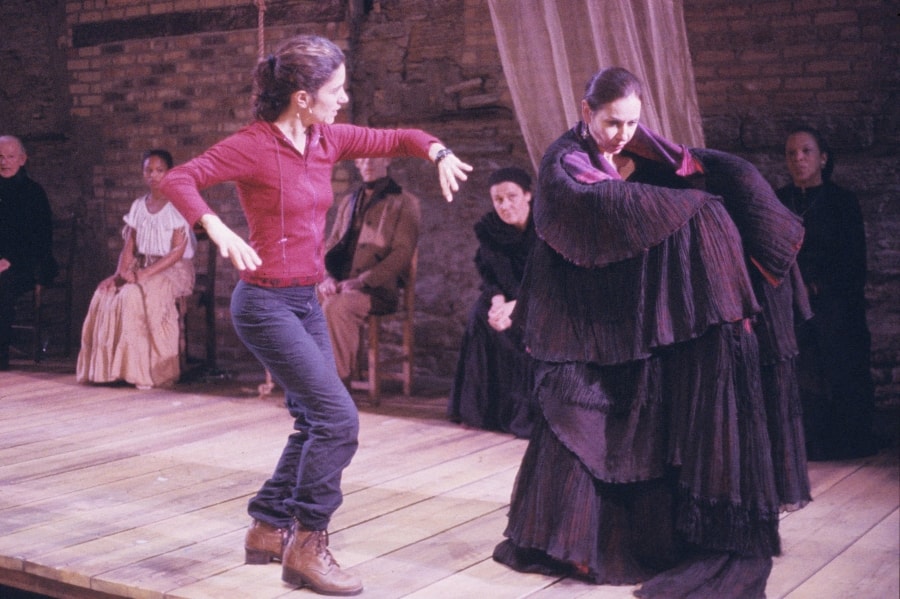MINNEAPOLIS: Ten Thousand Things Theater Company has announced that Marcela Lorca, who has served as the company’s artistic director since 2018, will step down at the end of 2024. Known for her movement practice, for an artist-centric approach, and for expanding community partnerships to include over 90 organizations throughout the Twin Cities and greater metro area, the Chile-born Lorca has received wide acclaim for productions like Into the Woods, Thunder Knocking on the Door, The Sins of Sor Juana, Iphigenia at Aulis, and Emilia.
“Marcela navigated Ten Thousand Things through significant societal challenges over the past six years with grace and calm,” said board chair H. Adam Harris in a statement. “She directed stellar shows and brought wonderful, new ideas to the organization. We will miss her tremendously.”
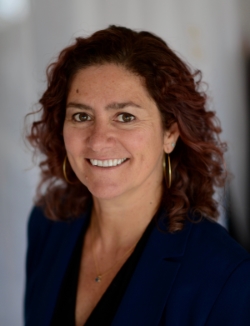
Lorca came to TTT after over 27 years with the Guthrie Theater and University of Minnesota BFA Actor Training Program as a director, choreographer, teacher, and more. After joining Ten Thousand Things, she navigated keeping all artists on contract despite canceled productions during the 2019-20 season and oversaw the creation of Ten Thousand Voices, which encourages community members to share their perspectives through storytelling. She will direct TTT’s first show of the 2024-25 season before stepping away mid-season. Her future plans include freelance directing and spending more time with her mother in Chile.
“I am proud of the work we have done together over the past few years, through a pandemic and turbulence in our community,” Lorca said in a statement. “However, recent shifts in both my personal and professional life have highlighted the importance of more flexibility for my next chapter.”
The board is forming a transition committee to guide a national search for its new artistic director, to join no later than June 2025. As of 2023, TTT’s budget was around $1 million.
I had the opportunity to sit down with Marcela Lorca to discuss her time at Ten Thousand Things, creative sensibilities, and hopes moving forward. The following has been edited for length and clarity.
GABRIELA FURTADO COUTINHO: Felicidades on your tenure with Ten Thousand Things. I would love to start by learning about what your early days there looked like for you. What was your impression of TTT when you first took over, and how do you think it changed under your leadership?
MARCELA LORCA: Even the interview process was very singular, because I was not only interviewed by members of the board, but I was interviewed by members of the artist core of TTT, which is a group of artists, many of whom I knew from my years at the Guthrie. I felt that this was an organization where everybody in it really cared very deeply and strongly about it. They wanted to make sure that the right person came to lead after, of course, the brilliant founder Michelle Hensley.
Then, I was welcomed by a staff that was so loyal, so caring, so supportive. I was really moved by that as a new leader. I wanted to make sure that I built on foundations that were already there. I didn’t want to change things just for change’s sake, I just wanted to strengthen the organization. One of the things that we did was to really look at the structure of the board and bring more people in organizing committees. We did an investigation of salaries and comparisons with the industry to really investigate where we were at. We did strategic planning where we really reinvestigated everything from our mission to our strategic plans over years. We did a lot of soul-searching to establish new goals.
After a year and a half, the pandemic came. As challenging as that was, I think we were in such a strong place. Organizationally, the staff was very dedicated. I’ve lived through a lot of earthquakes in my life, and I’ve been in a lot of disaster areas. So my first instinct was, “What do we do to help?” So we never shut down, but we geared up to help the communities that we knew needed us the most, asking what we could do as creative individuals and as a creative organization to help at each point.
We searched and searched and found a few ways that were very effective and, I think, very meaningful to people. I had previous experience with video production, so we established this program called Ten Thousand Voices, where we would send creative prompts to people in correctional facilities and people in senior facilities. They would send us back their writing, and we collected dozens and dozens of pieces. I didn’t know what we were going to get back, but we got the most incredible pieces of writing. That experience was just mesmerizingly beautiful and very poignant and very surprising. Then we hired actors, and we had extreme social distance in which one actor at a time would go into a studio with a greenscreen. I would do the background work, crafting collages of imagery behind the text. We would edit them, send them back into the facilities, and then hear back. We learned people were in tears because it was so moving. The pandemic was hard for everybody, but for people in correctional facilities, it was three times as hard because they were in severe lockdown. Because of the lack of employees, they would just lock them up in their cells and spend 20 hours a day there. They were extremely isolated, having a terrible time, and unable to see their families.
We did a lot of programming to help people at the time. We honored all our contracts and we paid the artists that were contracted for the season. Then we created an artist fund, and we hired many artists to do different tasks for the organization at the time. We started to perform pretty early-on, as soon as we could perform. We did a production of Iphigenia at Aulis in parks, a farm, and an indoor option. I think because we’re a flexible, nimble organization, we were able to keep functioning and looking for ways to serve. TTT’s strong mission of service offered a guiding light at that time.
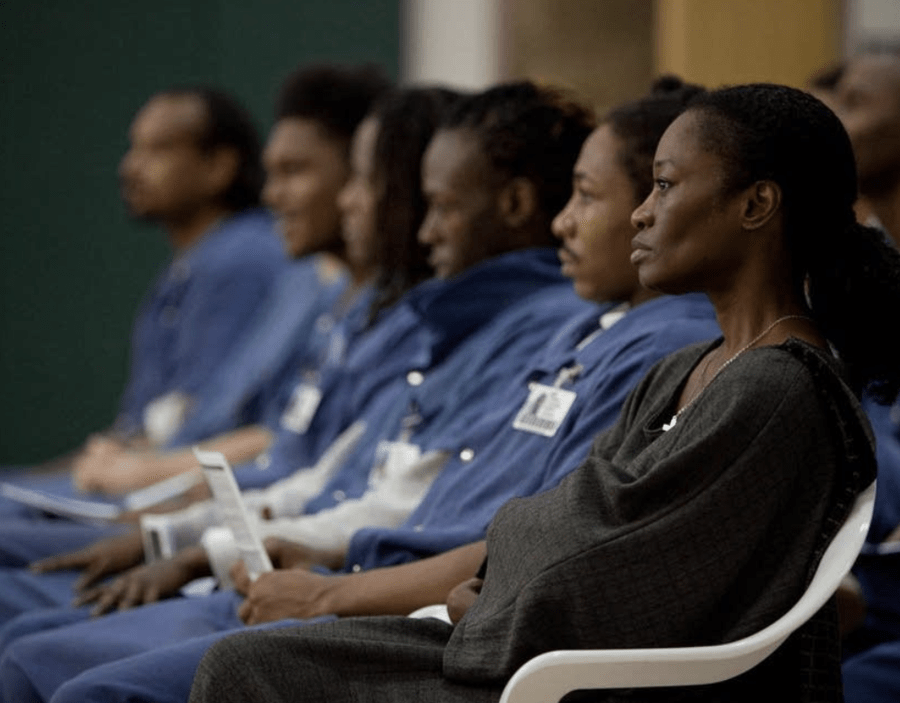
The company’s effective, clear mission-to-action thread feels important. It doesn’t just say the company is for everyone, but practices that with attendance cost and sensorily accessible settings. You also have a wonderful background working with the Guthrie Theater. Considering these two different companies and aesthetics, what are some things that you’ve gleaned over the past few years that you now seek out or consider afresh in your theatremaking?
I am so hyper-aware of that right now, because I went from directing and choreographing in this very epic space of the Guthrie thrust. TTT is done in-the-round, in the middle of community, and has actors conveying everything with very few other tools. The two settings are both challenging in their own ways, but it’s like changing scales. You have to be incredibly precise, and you have to pay great attention to the development of the story and how music and sound support it. There’s a rigor in storytelling in the TTT model because, when you go to communities, a lot of people have never seen a play. If they don’t understand it or if they’re not compelled enough, they’ll get up and leave. You have to be incredibly rigorous in how you keep people engaged moment-to-moment and how you tell a story that’s relevant to their lives. The stories that we choose have to work for everybody. And when you have very little, what you have left is your imagination. When you’re asking the audience to use their imagination too, you enter in a collective that is very powerful. What I’ve learned is how to use the actor’s imagination in order to ignite the audience’s imagination and invite them to really use it. That communion of an imaginative space becomes really powerful.
That’s a beautiful exchange. I’d love to know if there’s a specific memory that you look back on when you consider that exchange among actors, text, and audience. What surprising, spontaneous moments do you look back on for inspiration?
In general, my experience in correctional facilities is really powerful because people can tend to be very guarded when they come in. But after five minutes, their bodies start to relax, and then they start leaning forward and grinning. Really, their imaginations just take over, and their whole demeanor changes. They talk to the actors, and they talk to the play, they become active participants in that exchange. I remember we took Into the Woods into a correctional facility, and I was really taken by this man who was in the third row having a blast, closely watching the actors come in and come out. He was fascinated by what the actors were doing, by how they were playing with each other. At the end of the day, they’re watching people collaborate fiercely and serve a story in such a joyful way in this case. It taught me theatre is not only about the story that you bring, but also how you can uplift what a group of people can build together. In spaces that are highly segregated, like a correctional facility, that is a very powerful example of what life could be.
Another memory was at the opening of The Sins of Sor Juana. We had invited Karen Zacarías to join us. She was moved to tears by the end of the performance, an amazing moment to me personally and to all of us who worked on this beautiful play. Something else I take with me is Iphigenia at Aulis. In an outdoor performance at Everwood Farms in Wisconsin, right at the moment when Iphigenia starts singing about giving her life to Greece on the way to the sacrificial altar, a real-life deer crossed behind the scene over the hills in the background. In the next moment, Iphigenia disappears, and in her place lies a deer. It was an awe-filled and magical parallel.
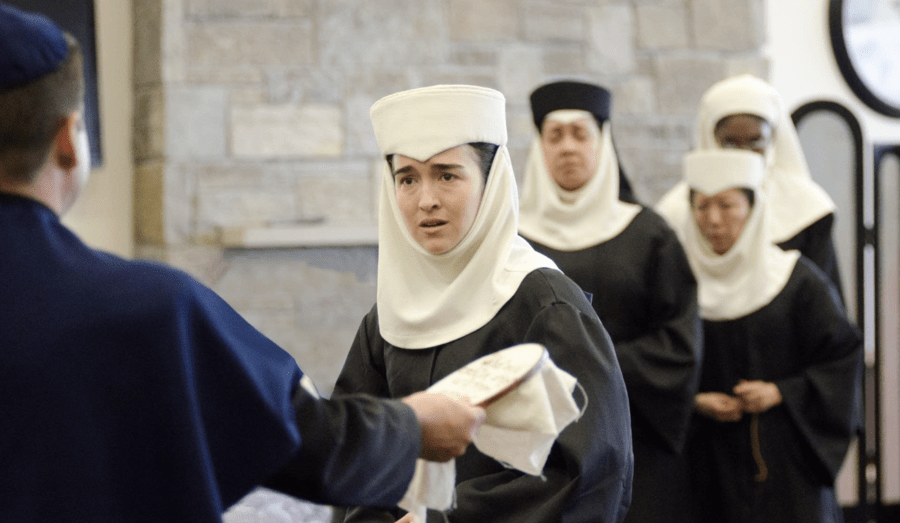
What powerful moments! I would love to know now, as you’re moving on, what is the TTT you leave behind? What do you think is next for the company, and what do you wish for the works they continue to produce?
I think the TTT that I leave behind is a very strong organization. I call it small but mighty. There’s a culture of kindness, artistic excellence, service, collaboration, and open communication. It’s a very healthy environment. We’re very open, and we walk our talk. I haven’t been in a lot of organizations in which people really walk their talk. The organization itself is financially stable, and it’s in solid structure to really thrive and continue to grow. As I say this, everyone around the country is in tight times. So we’re also very mindful of how we do the work and where we put our resources. There are so many possibilities for Ten Thousand Things. If more funding comes its way, it’s going to be so well utilized because we’re well-connected—we have about 90 partners. I think the model is brilliant and the staff is amazingly skilled, wonderful, and poised to keep growing with a new leader and vision.
In addition to leading TTT, you’re very known for care, thoughtfulness, rigorous directing, and movement sensibilities. I’m curious to learn a bit more about what future artistic endeavors look like. Where can we get excited about your work?
Before I finish at TTT, I’m going to do a new play at the Old Globe in San Diego called Stir by Melinda Lopez and Joel Perez. I’m going to start rehearsals soon. Then in December, I’m going to the Alley Theatre in Houston to also direct another new play by Marisela Treviño Orta called December. Then I’m going to Asolo Rep in Florida to direct Nilo Cruz’s Anna in the Tropics. I’m like a kid in a candy store. I just get excited about different spaces and different audiences. I’m very curious about how to speak to different communities and make really vivid work that resonates.
Those places have such strong Latine influences and distinct political climates. I see great value in creating theatre in different spaces and seeking to understand the people.
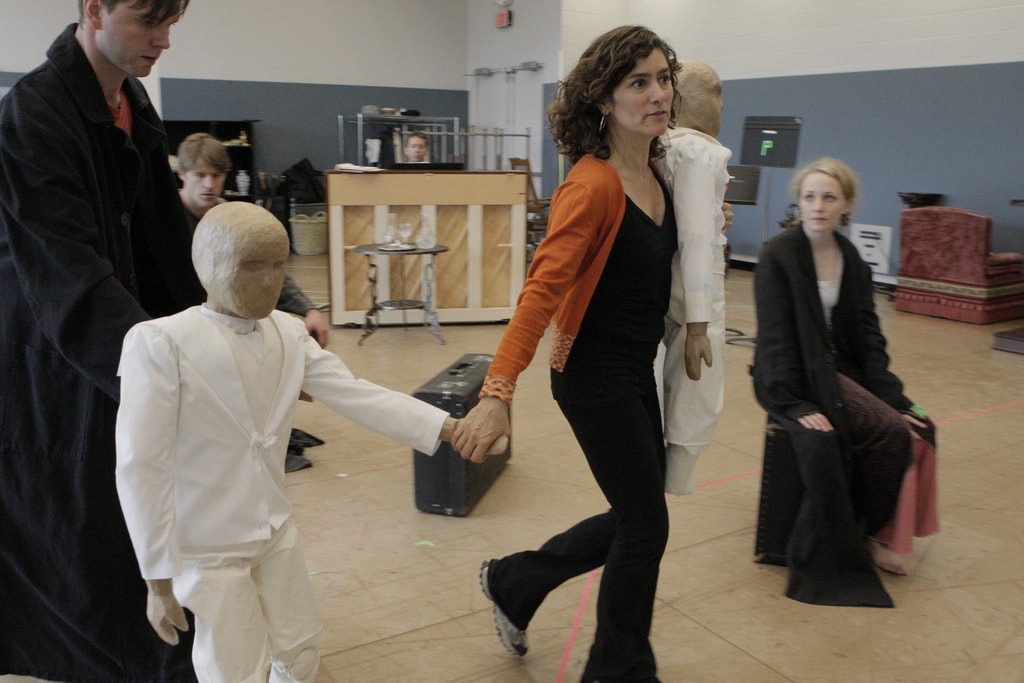
I agree with you. It just made me think about starting at the Guthrie pretty young with the fabulous director Garland Wright. I worked very closely with him for about six to seven years. My job was to facilitate the communication between the actor and the audience. I would step in during tech times and previews, taking notes and watching, being his extra pair of eyes and threading the communication throughout the whole thrust space. I got so used to sitting next to the audience and really listening to the audience. That’s something I’ve really enjoyed with TTT also, that I’ve been part of different audiences and different communities, and I’ve been able to grow in my perception and listening skills. I think that I then carry forward that growing sense of listening to communities and how audiences listen. Every community listens slightly differently, and they have different filters that come from different places.
That’s so aptly put. Is there anything else that you would like to share as you step away from your role?
I’m already feeling sad and nostalgic. I want to share this was not an easy decision for me. I have personal reasons too. I want to spend more time with my mother at this time in her life. The reason I’m a little nostalgic is because I just think the world of Ten Thousand Things. It has given me a lot. It’s a great example of how theatre can be so effective for so many different communities. I want to uplift TTT as I’m leaving. It’s a poignant moment, but I’m also excited about the future and what the future will bring for both me and for the organization. This is a village of artists that lend their expertise as teachers, actors, musicians, generously bringing the brilliance of theatre into community. And our board is unique, in that it’s culturally diverse, there are artists in it, and each director brings unique skills. The staff is small but wonderful at what they do. This is why TTT is so strong. A leader can set the tone, but it’s thanks to this wonderful and soulful collective that an organization can be as strong as TTT is. It is my hope that TTT continues to get the support it needs to sustain these important programs in the future.
Gabriela Furtado Coutinho (she/her) is the Chicago associate editor of American Theatre.

